
Gardening is trending again, and container gardening for beginners is leading the way. People who have never grown plants before are suddenly interested in planting a garden.
“Whether you live in a densely packed city or in suburbia, you can successfully grow edible plants and vegetables,” said Randy Schultz, content editor for Home, Garden and Homestead. “You can grow tomatoes, beans, spinach, squash and so much more. Container gardening for beginners is the way to go, and the time to start is right now.”
What is container gardening?
Quite simply, container gardening is growing plants in pots, planters, tubs, half barrels, an old cowboy boot or any other thing that can hold some potting soil and a plant. Basically, it is growing a plant in anything that’s not a traditional in-the-ground garden plot.
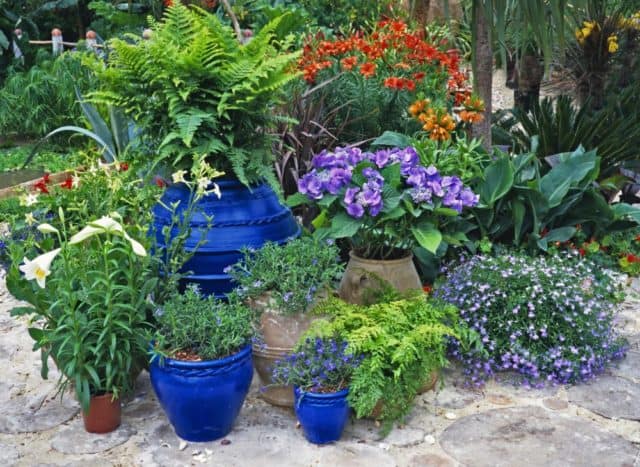
That’s why container gardening for beginners is so perfect. No garden plot is required, and you can grow a single tomato plant or a few herbs if that’s all the space you have.
What kind of plants can grow in containers?
Flowers, vegetables, herbs, succulents, cacti and even some dwarf trees can grow in pots and other types of containers. But what people are going crazy about right now is growing edible plants.
The term “edible plants” is used to describe the plants that you eat—such as lettuce and spinach. It also refers to plants that produce edible fruits and vegetables—such as tomatoes, zucchini, cucumbers and melons.
The size of the container must match the mature size of the plant you want to grow. For example, you can’t grow a tomato plant in a coffee can. The tomato plant will get too big, and the root system needs way more space than that. (OK, you could try to grow a tomato plant in a coffee can, but the plant will hate you. And you will never get any tomatoes.) But you could grow a lettuce plant in a container the size of a coffee can.
What do plants need to grow healthy?
Growing edible plants isn’t rocket science. But plants do need the right growing conditions to be healthy and produce edible leaves and fruits.
Vegetables and herbs need six or more hours of sunlight a day. So, locating your pots and containers in a nice sunny location is one key to success. Plants also need water, so a watering can and/or a hose is a must.
Plants need to grow in good soil or potting mix. To get the best production from your garden plants, add some fertilizer. We prefer organic fertilizer, but chemical fertilizers are also available. These can be purchased at hardware stores, garden centers and home centers.
What are the best containers?
The classic container for growing plants is a flower pot. It is made of a terracotta (clay), and it has a drainage hole in the bottom. Terracotta pots look like this:
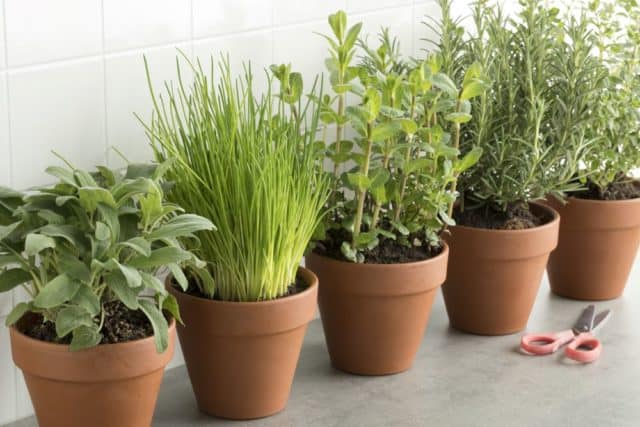
There are also more durable and attractive versions of the traditional clay pot called ceramic pots. They come in an incredible range of sizes from tiny to enormous. It is important to choose pots that fit your space, are big enough for the mature plant (or plants) and have a drainage hole in the bottom.
The drainage hole lets excess water exit the container so the plant roots don’t get waterlogged. To keep water from running all over the deck, patio or balcony, put a plant saucer under each pot to catch the excess water.
Please remember that small pots dry out faster, and therefore they need to be watered more often. Don’t make the beginner’s mistake of buying tiny pots just because they look cute.
What is a sub-irrigated container?
The newest kind of container is the sub-irrigated planter. It is typically a box shape that has a water reservoir in the bottom. If there is such a thing as a high-tech growing container, this is it.
“I am a big fan of sub-irrigated containers,” said Schultz. “After you add water to the reservoir, the water is naturally drawn up into the potting soil to keep the plant roots hydrated. This keeps the plants moist and happy. The water reservoir means you don’t have to water the plant as often.”
And not having to frequently water plants is a big deal. That’s because forgetting to water container-grown plants is one of the most common mistakes that beginners make when they start a container garden. Under-watering is probably the leading cause of dead container-grown plants.
The best sub-irrigated containers
The sub-irrigated planters (also commonly called self-watering containers) are large enough to accommodate big plants. Each of these planters can grow two full-sized tomato plants, or several smaller plants.
If you are serious about harvesting food from your container garden, investing in one or more self-watering containers is a great idea. Below are three of the best sub-irrigated planters. They are all available on Amazon, and we have included links directly to each product if you want to buy them now. As an Amazon Associate, Home Garden and Homestead earns a commission from qualifying purchases on Amazon.com.
The City Jungle with Trellis
The City Jungle planter was engineered in Germany to be the ultimate self-watering container for growing vegetables. It offers a sleek, modern design in a slate gray color that looks great in any urban setting. The two square feet of growing area is big enough for two mature tomato plants. It’s also perfect for peppers, squash, salad greens, herbs and virtually kind of plant.
The City Jungle trellis fits right onto the container, and it’s perfect for growing tomatoes, cucumbers or any type of vining plant. Fill up the 4.5-gallon water reservoir, and you won’t have to water your plants for days in most climates. The City Jungle with trellis sells for about $100. Buy it here.
Urban Garden Planter
The sleek design of the Glowpear Self-Watering Urban Garden Planter fits into any modern design. The clip-on water drip tray makes this planter a good choice for patios and even indoors.
No trellis is available, so this planter isn’t ideal for tomato plants or any large vegetable plants. But it provides a designer-inspired environment for growing salad greens, herbs and other small plants. The Glowpear Urban Garden Planter sells for about $170. Buy it here.
EarthBox Organic Kit
The EarthBox is a sub-irrigated growing container that has been modified over the years to provide fool-proof vegetable gardening. It was designed by commercial farmers, and it has been adopted by beginning and advanced gardeners alike.
The EarthBox Organic Garden Kit includes the EarthBox planter, four caster wheels to make it easier to move the box, two reversible mulch covers, organic fertilizer and organic dolomite fertilizer supplement. The handsome dark green color looks great anywhere. Check price here.
What kinds of plants should I grow?
“Grow what you like to eat,” says Randy Schultz of HomeGardenandHomestead.com. “It doesn’t make any sense to grow broccoli if you hate broccoli.”
Schultz also says beginning gardeners should grow edible plants that are easy to grow. That way, you are more likely to literally enjoy the fruits of your labor.
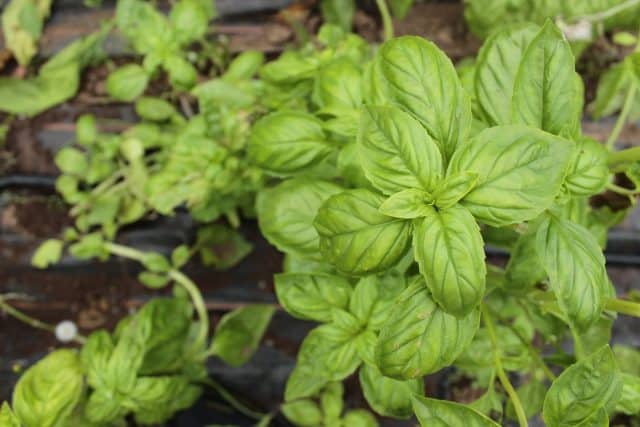
New gardeners should start by growing herbs and vegetables that are vigorous and basically foolproof. Herbs like basil, sage, parsley and thyme are all easy to grow. Plus, they don’t require much space, so they grow well in containers. Instead of planting seeds for these herbs, opt for starter plants instead. Herb plants are readily available at plant nurseries and garden centers.
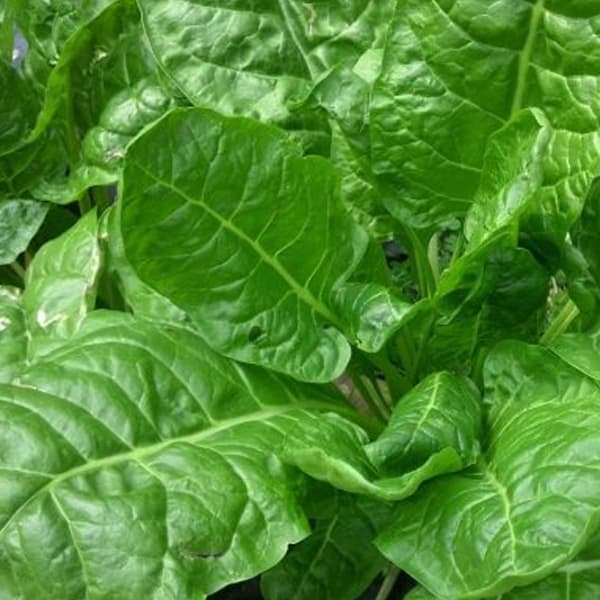
Salad greens—including lettuce, spinach and arugula—are an excellent choice for beginning gardeners. These plants are easy to grow from seed. Just plant the seeds according to the directions on the seed packet. Keep the soil moist until the seeds sprout and the small plants become established. Then, harvest these plants by picking off the oldest leaves, so the plants will keep growing and keep producing. You can also find starter plants for popular leafy salad plants like lettuce. These small plants are more expensive that a packet of seeds, but you will be harvesting edible lettuce much soon.
Grow tomatoes for a real treat!
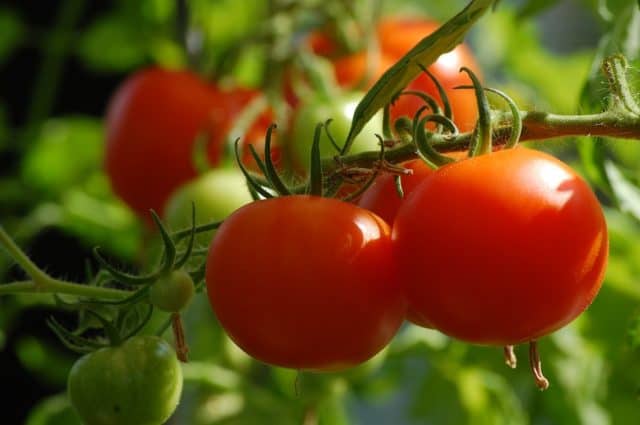
Tomatoes are the most popular edible plant because they are very productive and very easy to grow. Best of all, the taste of a homegrown tomatoes is nothing short of spectacular. But if you’re going to grow tomatoes, you need a large container such as the City Jungle with Trellis or an EarthBox.
Tomatoes require a long growing season, so beginning gardeners should buy tomato starter plants. (Don’t buy tomato seeds; those are for experts.) Give your tomato starter plants plenty of room, because indeterminant tomato plants keep growing bigger and keep producing tomatoes throughout the growing season.
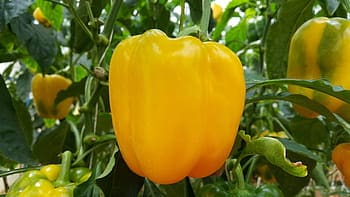
Other easy-to-grow vegetables for beginners include peppers, squash, green beans, swiss chard and cucumbers. There is a lot of good advice online for growing specific types of edible plants. Read How to Start a Victory Garden 2.0 and Best New Vegetable Seeds for Your Garden . You can also do a Google search for “How to grow kale” or “How to grow tomatoes” to read more stories and get links to YouTube videos.
A final thought about container gardening for beginners
“Don’t be afraid to jump into gardening,” said Randy Schultz. “Container growing is absolutely the best way to start. There has never been a better time to grow vegetables. After you pick your first ripe tomato or eat your first leaves of homegrown lettuce, you will realize that growing edibles is a skill that will reward you for the rest of your life.”


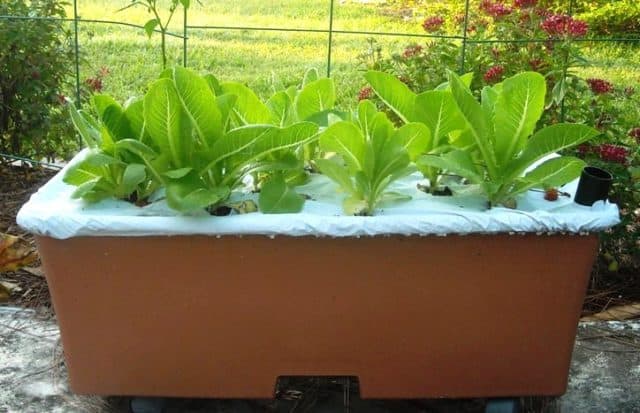
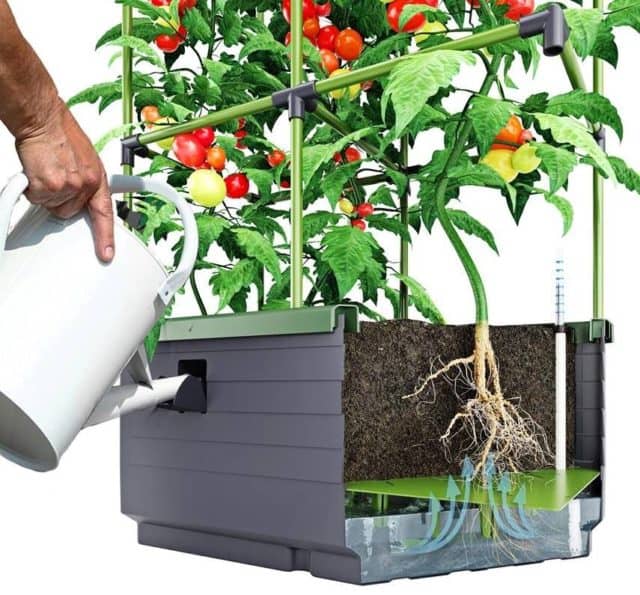
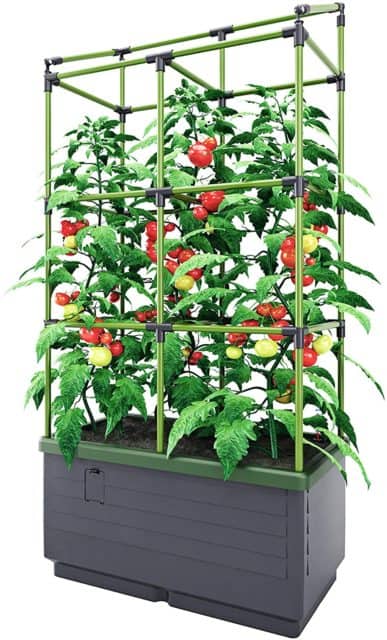
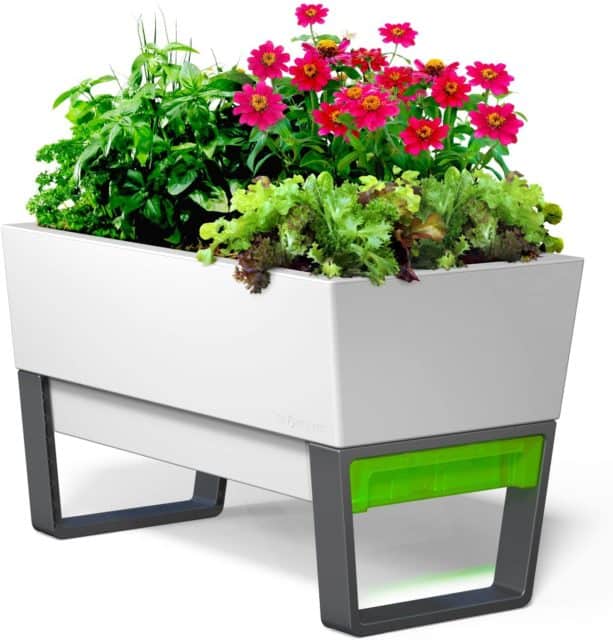
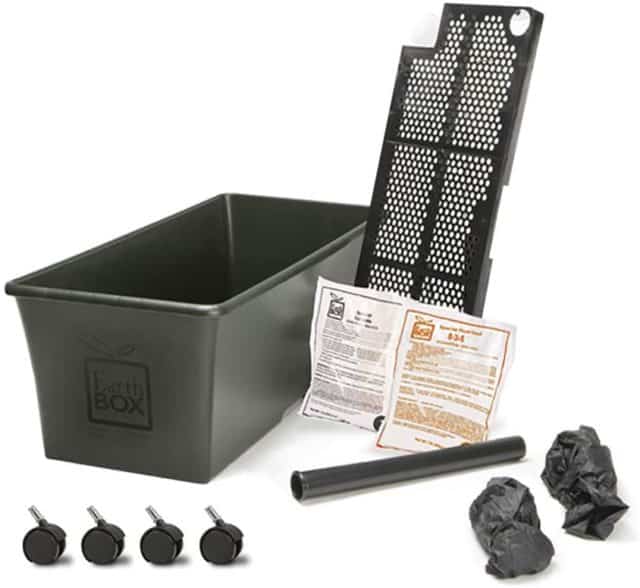

Leave a Reply